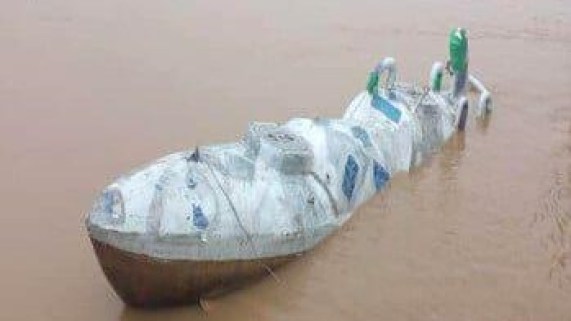
Venezuelan authorities have not offered much information about the recent capture of a drug smuggling submarine close to the border with Colombia, leaving it unclear if the use of semi-submersibles is increasing in the country.
By Insight Crime
May 6, 2022
On April 29, General Domingo Hernández Lárez, the head of the Venezuelan Army’s strategic operational command, wrote on Twitter that troops had captured a rigid hull-type submarine vessel.
The next day, he posted a video showing the six-meter-long watercraft discovered in the border state of Apure. He alleged the vessel was deployed by an unspecified Colombian crime group to traffic drugs along the Arauca and Orinoco Rivers from Colombia to Venezuela’s Atlantic coast.
Though little other information was offered about the submarine, Hernández Lárez claimed it travelled “below the water,” suggesting the submarine was submersible. The vessel was empty when it was discovered, and its exact location was not disclosed.
However, a local resident told Infobae that the vessel was seized in front of the vast 34,000-hectare Merecure ranch in the municipality of Achaguas.
InSight Crime Analysis
Venezuela has not seen many instances of drugs being moved via submarine, with the capture of such a vessel being a rare occurrence. In contrast, Colombia seized 50 such submarines between January 2019 and August 2020.
However, several other elements connected to the Venezuelan submarine stand out.
First, the vessel was found deep inland. Narco-submarines are typically manufactured near coasts from where they are launched. This has been true even in the few previous cases of Venezuelan narco-subs, such as the 2009 seizure of the country’s first narco-sub shipyard in the Atlantic state of Delta Amacuro and the 2013 reports that Venezuelan-built drug submersibles were seen off Puerto Rico.
A solitary exception to this pattern was the 2014 discovery in Guyana of a relatively large fiberglass semi-submersible in a tributary of the Waini River near Venezuela. However, Guyanese authorities believed that vessel to have been sailing upriver for a trans-Atlantic voyage, whereas the submarine caught in Apure is unlikely to have had such range, according to an analysis by narco-submarine expert, H. I. Sutton.
Second, there have been questions over its size and the depths it could reach underwater. At six meters, the Apure submarine is on the smaller end of the narco-sub range, with a modest engine capacity and limited cargo space for storing drugs relative to customary models, according to Sutton.
Yet it could apparently fully disappear below the waterline, unlike the majority of narco-submarines, which are semi-submersible vessels with exhausts and ventilation pipes always above water level.
These two traits appear contradictory. The principal attraction of fully submersible vessels is their ability to transport large quantities of cocaine for long distances while evading radar. But the Apure vessel’s size means it could likely only smuggle small quantities of drugs across short distances.
One explanation from Sutton suggested the submarine was not headed to the Atlantic coast, as authorities alleged, but was instead used to pass drugs from Colombia to Venezuela. This would make sense, given that ongoing violence on Apure’s border with Colombia reportedly continues to disrupt traditional land trafficking routes.
…
Read More: Insight Crime – Questions surround Venezuela’s recent seizure of rare Drug Sub
…

